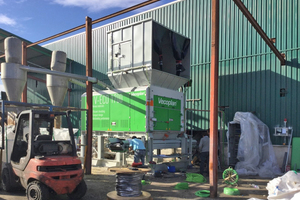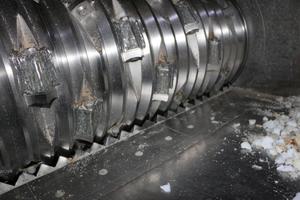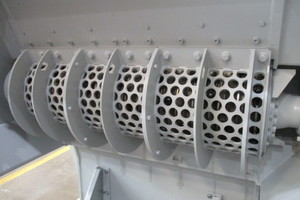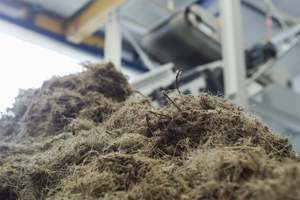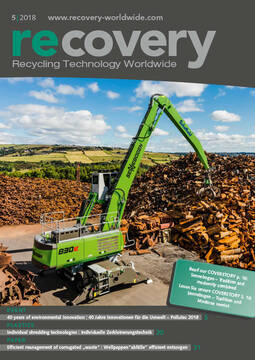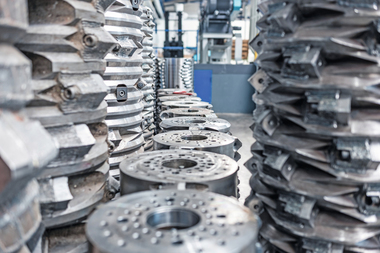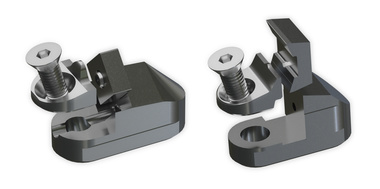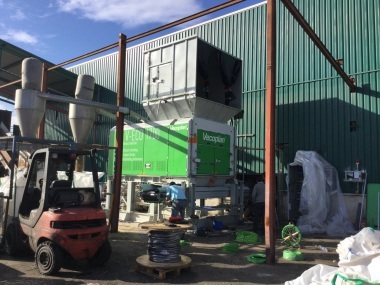Vecoplan develops individual shredding technologies for top quality output and maximum performance
They have a high level of mechanical stability at low weight and can be extremely rigid or exceptionally tough – and thanks to their unique characteristics, technical plastics are being used more and more frequently in the automotive industry, in aviation and in the production of food packaging. However, the rising demand is driving up prices and availability is noticeably decreasing. This is why processing companies return process waste to the production cycle in the form of purgings or rejects to an increasing degree. To achieve this, however, they need a technology that can also process the challenging material into high-quality granulate. Vecoplan offers the shredders for high throughput. Nevertheless, what are the relevant factors behind this?
“More and more industries are relying on technical plastics,” says Martin Klotz, who has studied the market for years. He is the Area Sales Manager at the Vecoplan AG factory based in Bad Marienberg in the Westerwald region of Germany. The company develops, produces and sells machines and plants that shred, convey and process primary and secondary raw materials in the production and recyclable materials cycle. “In particular, the shredding of these materials is becoming an increasing challenge,” he says. Why should that be? “It’s precisely because of the very characteristics which make them so useful.” He cites polyamides (PA) as an example, large quantities of which are processed into fibres. These engineering thermoplastics can usually withstand permanent temperatures of up to 130°C. However, they are above all characterised by their high strength, toughness and damping properties. “In the automotive industry, these materials are more and more often replacing metal,” explains Klotz. Increasing electrification is increasing demand, whether it is for battery protection, reducing dust in interiors or for modern lighting technology with LEDs.
PA, like polyoxymethylene (POM), polyethylene terephthalate (PET) and Cast Polyamide 6, with their excellent mechanical properties, are also used in the construction of machines. PET is also very popular in the beverage and food industry, another important market that relies on engineering plastics – because in Europe especially, consumer awareness of sustainable packaging has improved. PET is particularly abrasion-resistant and resistant to diluted acids, oils, fats and alcohols. “But the increasing demand for engineering plastics in very different industries is leading to a tense supply situation,” says Klotz. “It can now take up to four months for an order to be delivered. Prices are also rising. This is an unsatisfactory situation for processing companies.”
Turning the old into high-quality new
One solution for processing companies is to return material back into the production cycle in the form of purgings or rejects. This ‘in-house recycling’ offers a number of advantages: Companies spend less on expensive new goods and there is no need to dispose of them in external recycling facilities. Less space is required in the factory hall where the reject material is stored, and the material only needs to be stored temporarily before a clean preparation of the raw material takes place. “And with the right technology, a quality can be produced that is comparable to – or even better than – the original material,” says Klotz. This is not as easy as it sounds, however – and that is where shredding comes into its own. He cites GF 30 glass fibre-reinforced plastic as an example: “The fibres inserted in this material must have a certain length to ensure the required rigidity”, says Klotz. “If they’re too long or too short, the quality suffers.” Viscosity also plays a role when other materials – such as PET – are to be compounded in the extruder. Material flow behaviour is improved if shredding takes place in a single-stage process rather than in a multi-stage process. The output quality and the throughput performance must both be efficient enough to enable companies to work economically.
It all depends on the system technology
Vecoplan’s developers work closely with the company’s customers to find the right solution for the various engineering plastics. “In recent years, processing companies have constantly presented us with new challenges,” says Klotz. “In some cases, these materials were extremely difficult to process and had to be shredded into high-quality granulate at a high throughput.” Among the customers were companies that had recently asked other manufacturers for a solution, but they were not satisfied with the answers they got. “We develop plants which we adapt to the individual applications in numerous tests in our in-house technical centre”, explains Klotz. “And we constantly exchange information with the users.”
So what is it that distinguishes a machine like this, and which components are important? “It’s the cutting geometry that’s mainly decisive,” says Klotz. “We can exactly adapt our plants to input and output requirements by changing the rotors and cutters and selecting the right screen. The performance can be precisely determined by the interface. Depending on the requirements, for example, we might select a larger rotor diameter, which can be equipped with hardened tools that can also be used several times and changed quickly. For a more stable and tougher tool design, the core can be increased, and their mounting can be adapted to the task at hand. The Vecoplan technicians can also use bolted and hardened counter-knives to make the counter knife bar more solid.
A dynamic, robust and safe drive
For the rotors, Vecoplan uses the HiTorc drive, which is available in various performance classes, depending on the requirements. It works dynamically, with a strong start-up phase and a high torque. No mechanical elements such as gearboxes, belts, clutches or hydraulic units are required. In contrast to units with gear drives, the strong vibrations and shocks that occur during the often-difficult shredding process pose no great challenge for the HiTorc direct drive.
“Compared to mechanical and hydraulic drives, wear is significantly lower and maintenance work is less”, says Klotz. “And thanks to the direct mounting of the drive on the rotor shaft, there is no loss of power in the power train and that means the HiTorc can achieve a higher level of efficiency.” The high torque available over the entire speed range also enables a trouble-free start-up under load. Fast and dynamic reversing processes are also possible in the event of overloading. For safe operation, the braking resistor enables a fast rotor stop if there is a risk of an accident occurring (emergency stop) and if impurities are detected. PTC thermistor technology protects the main motor from fire. “The Oswald Elektromotoren GmbH company has introduced our HiTorc as a main drive in its direct drive technology. This has revolutionised electric motor construction,” says Klotz enthusiastically. “Electric motors without gears considerably increase the energy efficiency and consequently the productivity of plants. In recognition of this, the HiTorc was awarded the environmental prize of the Deutsche Bundesstiftung Umwelt (German Federal Foundation for the Environment) in 2017.”
A reinforced design where required
The developers can strengthen the machines with a reinforced design to prevent premature wear during the shredding of certain materials, such as glass fibre-reinforced material. The housing can be constructed with thick-walled ribs, for example, with more solid sidewalls and a more robust base. “In one of our plants, we increased the distance between the rotor end face and the side wall, in both the rotor area and screening chamber. This prevents tapes and wires from winding on to the rotor shaft,” says Klotz. The free passage of material downwards also reduces wear between the rotor and the sidewall. A revised adjustment between the drive shaft and the rotor bearing, plus robust, exchangeable sealing elements on the rotor and side wall prevent materials from penetrating and adhering to the bearing area. This increases service life and improves ease of maintenance.
Customers include companies from various industries – from the electrical industry, for example, another important buyer of engineering plastics. “We developed a shredding technology for a company that processes glass fibre-reinforced material containing compressed connectors and circuit boards,” explains Klotz. The material is tipped into the plant in boxes. The brass parts are first sorted mechanically, and then shredded into a high-quality output material thanks to the Vecoplan technology. Another customer manufactures road delineators, which have a normal lifespan of around 15 years. “Together with the customer, we worked out a solution to recycle the material,” says Klotz. One important thing here was that the material had to be washed intensively after shredding, because the posts can be considerably soiled by road salt, for instance.
“Depending on the application, we develop completely new components or optimise existing ones,” reports Klotz. “In this way, we can always respond effectively to the different materials and throughput requirements of our customers. That’s important, because the availability of new materials is not expected to improve in the coming years.”
www.vecoplan.com

